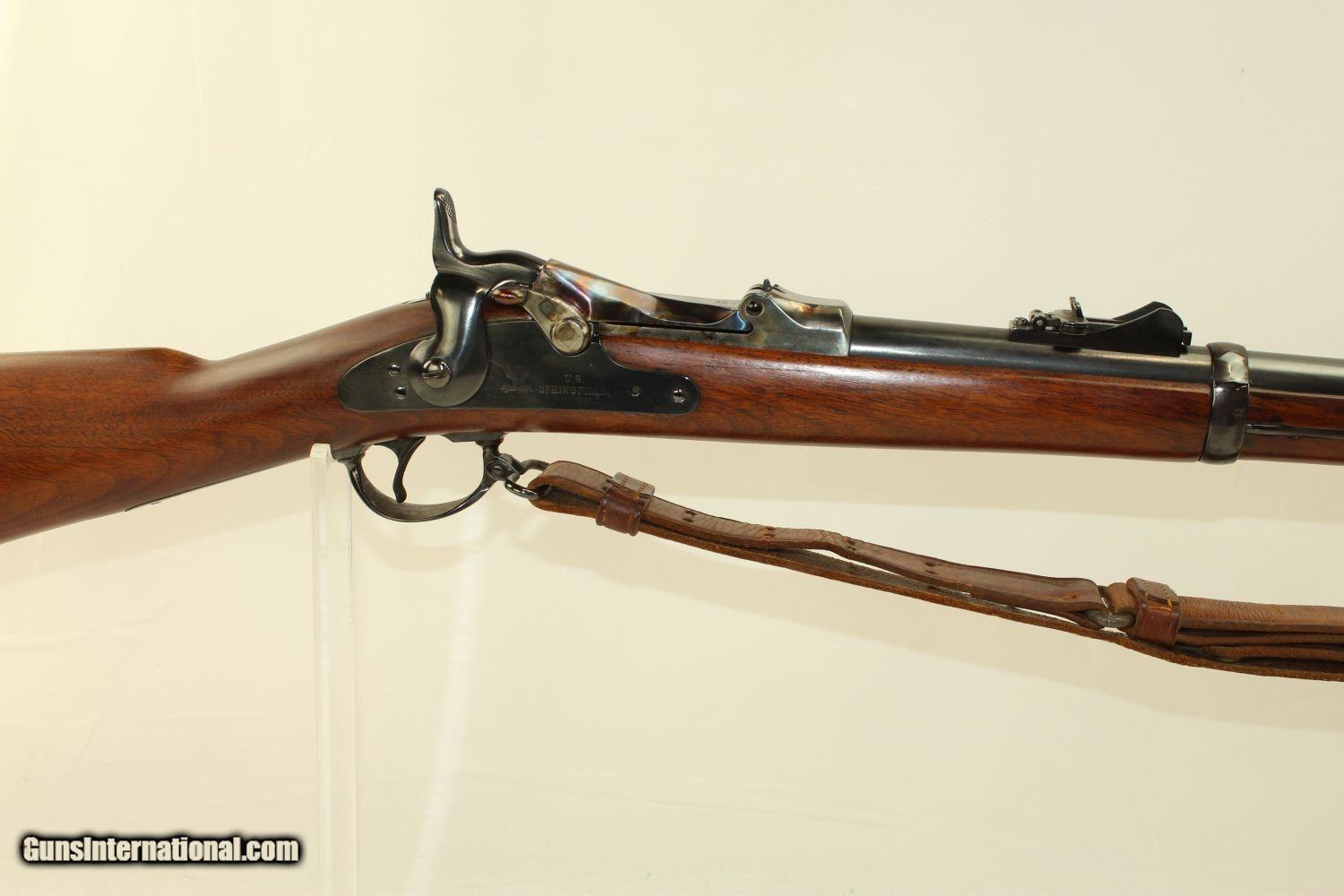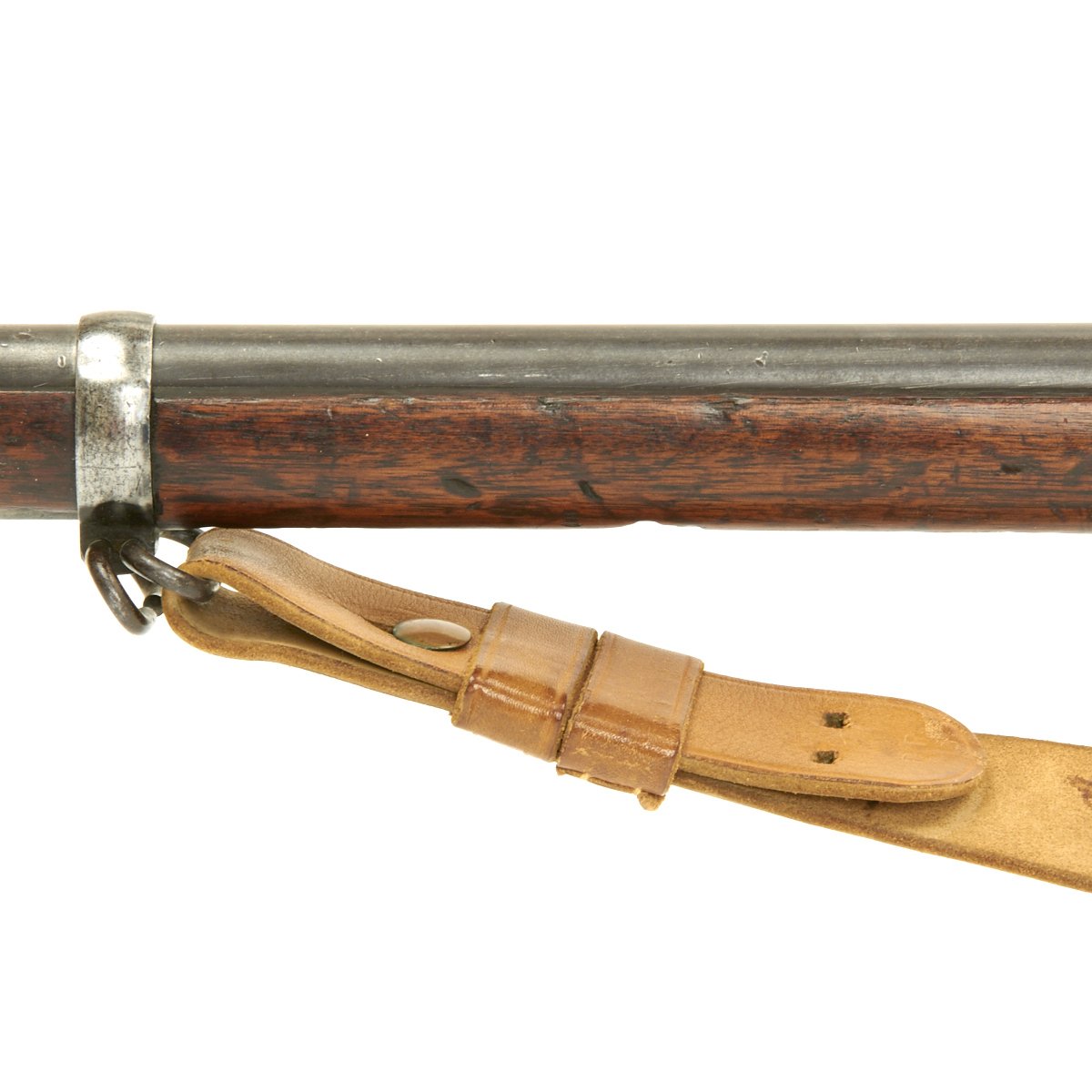

45-70 trapdoors during the Spanish-America War of 1898. In fact, due to a shortage of Krags, some secondary army units used. 30-caliber cartridge chambered in a Krag-Jorgenson bolt-action repeater. military after being “officially” replaced in 1892 by a smokeless.

45-70 trapdoor also went through several variations, the last the Model 1889. 45-70 – or 55 grains of powder for the lighter cavalry carbine. 45 cartridge was loaded with a 405-grain bullet and 70 grains of black powder for infantry rifles – the reason it became known as the. 45-caliber round, screwed into a trapdoor “action.” The. Instead it featured a separate barrel chambered for a new. The Model 1870 was replaced in 1873 by a new trapdoor Springfield, which was not a converted muzzleloader. 50-70 conversion went through several variations from 1866 to 1870, when both an infantry rifle and cavalry carbine were produced. 50-70 conversion was a success, and its first major action was the famous Wagon Box Fight of 1867 in present-day Wyoming, where a handful of soldiers from nearby Fort Phil Kearny, along with a few civilians, held off several hundred Indian warriors led by Lakota (Sioux) Chief Red Cloud, thanks in part to the rapid repeat fire from the cartridge rifles. The Allin conversion resulted in a “trough” behind the chamber, where the top of the barrel was removed to accommodate the forward-hinged breechblock. 58’s ballistics were comparatively wimpy due to the pressure limitations of the copper rimfire case, while the smaller parts of the breechblock were complicated and failed too often. These rifles were called the Model of 1865, but unfortunately the. 58 rimfire cartridge loaded with a 480-grain bullet and 60 grains of black powder. The first trapdoor Springfields were 5,000 muzzleloaders chambered for a. Alexander Dyer, Chief of Ordnance, but Allin assured the general the Army could use his design without paying royalties. Allin personally patented his system in 1865, unbeknownst to Gen. His design removed a few inches off the top of the rear end of the barrel the gap was then fitted with a steel breechblock hinged at the front (hence the nickname “trapdoor”) containing an angled firing pin. Allin, master armorer at Springfield Armory. Several people came up with workable conversions, but the winner was developed by Erskine S. The breechblock is stamped “1866,” indicating a first year conversion. 60-caliber bullet, and the Dreyse’s long firing pin (“needle”) pierced the paper and traveled through the powder to ignite the cap. The percussion cap was attached to the base of the. Some other armies around the world had already converted to cartridge rifles, though many were still relatively primitive, such as the paper cartridge for the Dreyse “needle-gun,” a bolt-action single shot adopted by Prussia in 1841. This resulted in caplock rifles, which immediately began to replace flintlocks, and eventually self-contained cartridges. Alexander John Forsyth, developed a fulminate-based compound that exploded when sharply whacked. These started appearing long before the War Between the States, the inevitable result of the development of the percussion cap, which appeared in the early 1800s when a Scottish Presbyterian minister, Rev. Army needed to keep up with the latest technological trend, self-contained rifle cartridges. In 1865 the United States government was pretty broke due to an internal war that lasted four years, but to be prepared for other possible conflicts the U.S. 50-70 trapdoors than more famous commercial rifles, due to being more abundant. This item can be shipped worldwide.Some historians believe far more bison were taken during the nineteenth-century with. The seller is “koolstuff1958″ and is located in Henderson, Nevada. This item is in the category “Collectibles\Militaria\Indian Wars (1866-97)\Original Period Items”. The item “Indian War US Army Model 1873 Springfield Trapdoor Leather Rifle Sling 5th Pat 2″ is in sale since Friday, April 3, 2020. The age of the leather, will make the sling weaker than when it was new, and may not be able to support the weight of the weapon. The sling is used, please see photo’s for condition. Still has the original rich dark brown color. This sling is made from salvage civil war musket slings that were sewen together.

The sling is approximately 1 1/4″ wide x 70″ long. This is the 5th Pattern Sling, with the narrow prong hook at one end and a brass stud loop at the other end. Indian War Era US Army Model 1873 Springfield Trapdoor Rifle Sling – 5th Pattern – Original – Very Nice Condition.


 0 kommentar(er)
0 kommentar(er)
